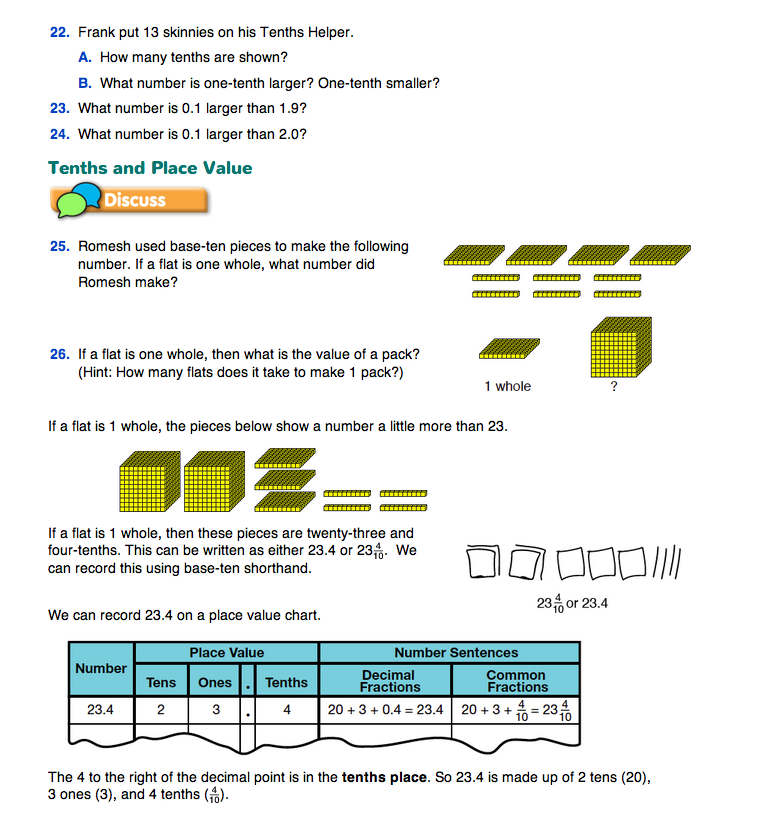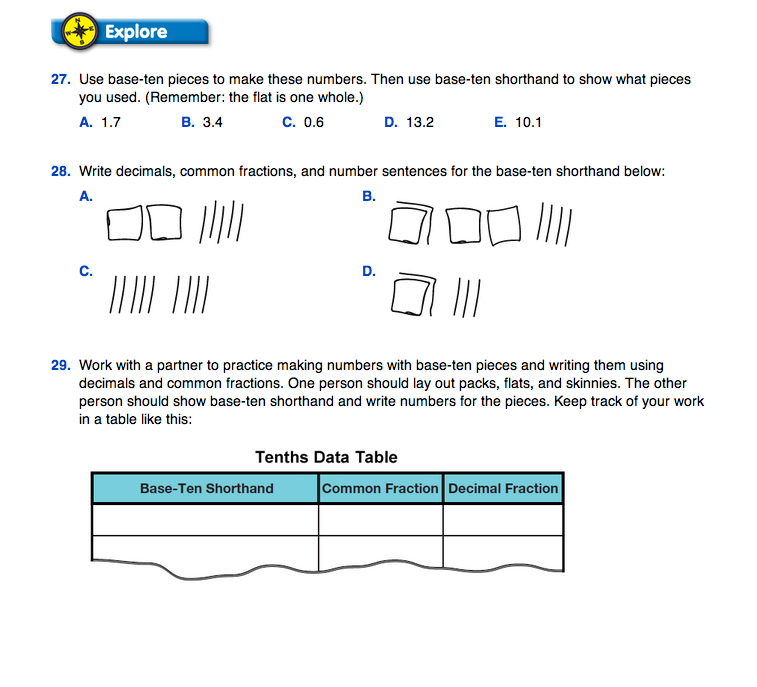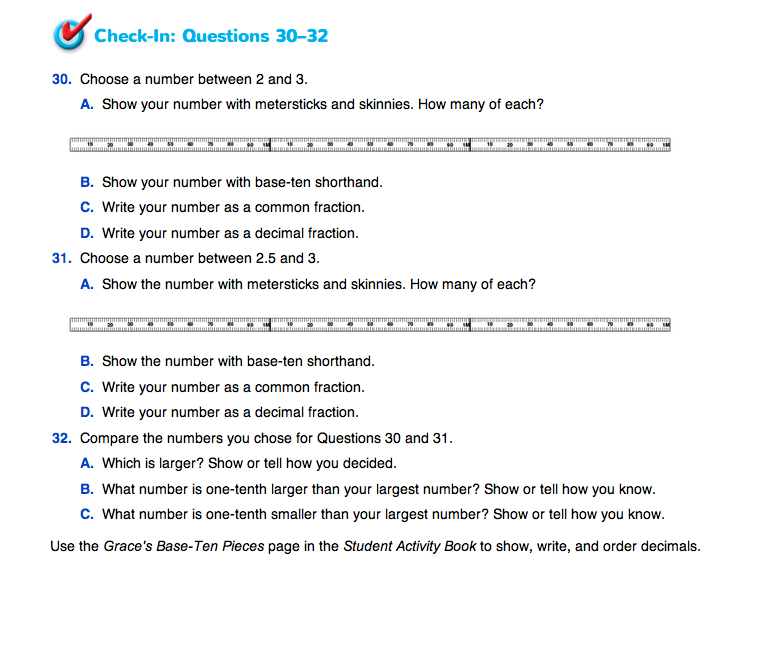Tenths
Est. Class Sessions: 2–3Developing the Lesson
Part 3. Tenths and Place Value
Have students model the numbers in Questions 25–26 using base-ten pieces. Students give the value of a pack if a flat is one whole. Help students see that a pack represents 10 by counting from one to ten as they stack 10 flats next to a pack.
Use the examples and the place value chart following Question 26 to discuss the function of the decimal point. Note that the digits to the left of the decimal point are whole numbers and those to the right indicate fractions of a whole.
Write 6.2 for students to see and ask:
Write 31.6 in base-ten shorthand for students to see and say:
Assign Questions 27–32 to student pairs to provide practice with representing tenths with number lines (metersticks), base-ten pieces, base-ten shorthand, as a common fraction, decimal fraction, and with a number sentence.
Assign the Exploring Tenths pages in the Student Activity Book for homework.
















